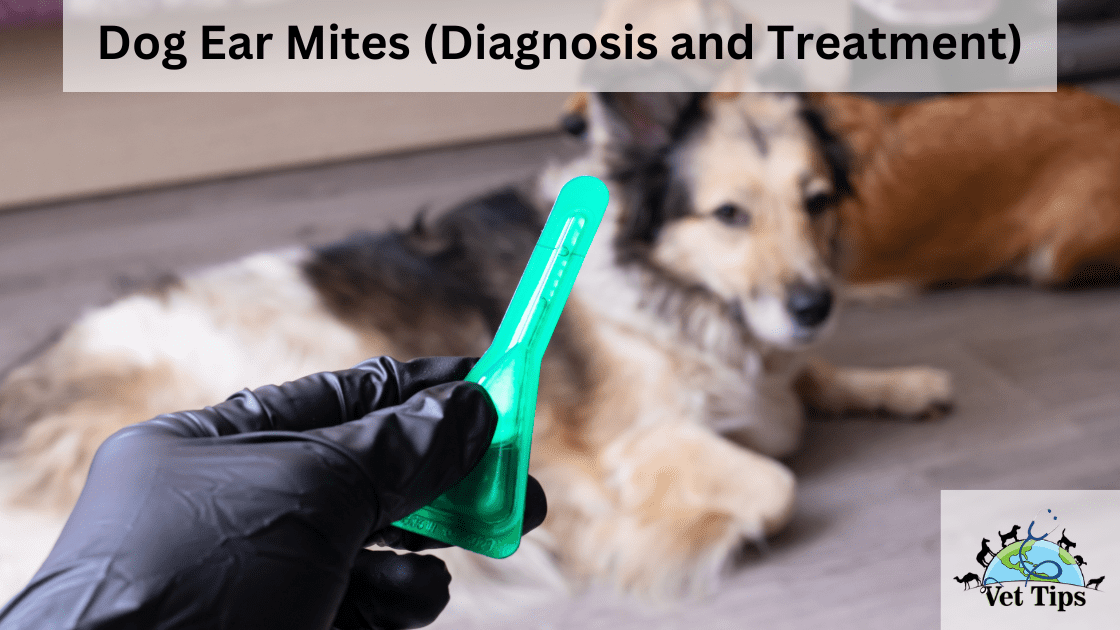“Dog Ear Mites (Diagnosis and Treatment)” mostly cause a frequent debate between dog enthusiasts. It happens due to a variety of ear mites and a variety of diagnostic tests and treatments. But here in this article, we tell you the most common diagnostic methods and best treatment to cure canine mites.
Continue reading to learn more.
Ear mites are a pretty common parasite in dogs and cats, and they can be pretty annoying. The mites are microscopic and infectious organisms that look like little white spots when viewed with the naked eye but are too small to be seen by the human eye. When confirming their presence, a microscope is typically used to make the determination.
Ear mites are tiny parasites that dwell on the skin of the ear canal and feed on ear wax and skin oils to survive. An adult mite generally lives for around two months, but it may reproduce quickly, with eggs hatching in just four days and developing into a fully grown adult mite ready to reproduce in just three weeks.
What is the best method to tell if my dog has ear mites?
An ear mite infection may cause your dog’s ears to itch, which will frequently result in him shaking his head excessively or clawing at his ears with his paws due to the infection. Ear mites can also generate wax and irritation, which can cause your pet’s ears to seem red and irritated as a result. Ear mites are also known to create a dry, black discharge from the ears when they are present. There may also be a distinct odor present.
Nevertheless, because irritation in a dog’s ear is more often than not caused by allergies, which can lead to infections other than ear mites, you must take your dog to the veterinarian for a proper diagnosis – especially because the parasites are extremely difficult to detect with the naked eye. Veterinarians will typically use an otoscope to examine the ear’s interior to confirm a diagnosis of ear mites.
Many dog owners wrongly believe that their dog has ear mites when, in fact, the dog is suffering from a yeast/bacterial ear infection. This can result in weeks of unsuitable therapy and the illness worsening due to the incorrect assumption.
How do dogs become infected with ear mites?
Ear mites are spread between animals via ‘hosts’ – through physical contact.
Is it possible for ear mites to spread to other pets?
Ear mites are contagious, which means they can spread to other dogs and cats in the house. Even if additional pets are not exhibiting symptoms of ear mites, they must be treated at the same time as the affected pet. Felines are the most susceptible to contracting ear mites due to the way they live their lives.
Is it possible for people to contract ear mites from pets?
Dog owners have been known to get skin rashes if their pet has ear mites, although this has only happened in exceedingly rare instances. There are significant differences between the parasite that infects dogs and the parasite that infects people.
What is the most efficient method to get rid of ear mites? Dog Ear Mites Treatment
The majority of spot-on flea treatments also work to prevent and treat ear mites, and if your veterinarian recommends it, this is by far and away the most convenient approach to keep your pet safe from parasites. One or two applications are usually sufficient, and they are significantly less stressful for your pet – as well as for you – than ear drop applications.
Even though spot-on treatments are the most popular, ear drops are also available for use. Some of these require therapy for at least three weeks because the drug cannot eliminate the parasites’ eggs, which take 21 days to mature into adult mites. If you choose to use these therapies, you must follow the directions on the label and for the specified amount of time.
Other topical treatments only need to be taken for 10 to 14 days. They are considerably more robust, killing both the eggs and the adult mites and including medication to combat the infection caused by the parasites. These treatments are also less expensive.
Always consult with your vet-doc about the most effective and appropriate treatment to take.
Tell us in the comments, how you like our article “Dog Ear Mites (Diagnosis and Treatment)”
For similar posts like this, click here.
For the source file, click here.





One thought on “Dog Ear Mites (Diagnosis and Treatment)”